Innovative Team Collaboration: 3 Tools for Seamless Project Management
Read More
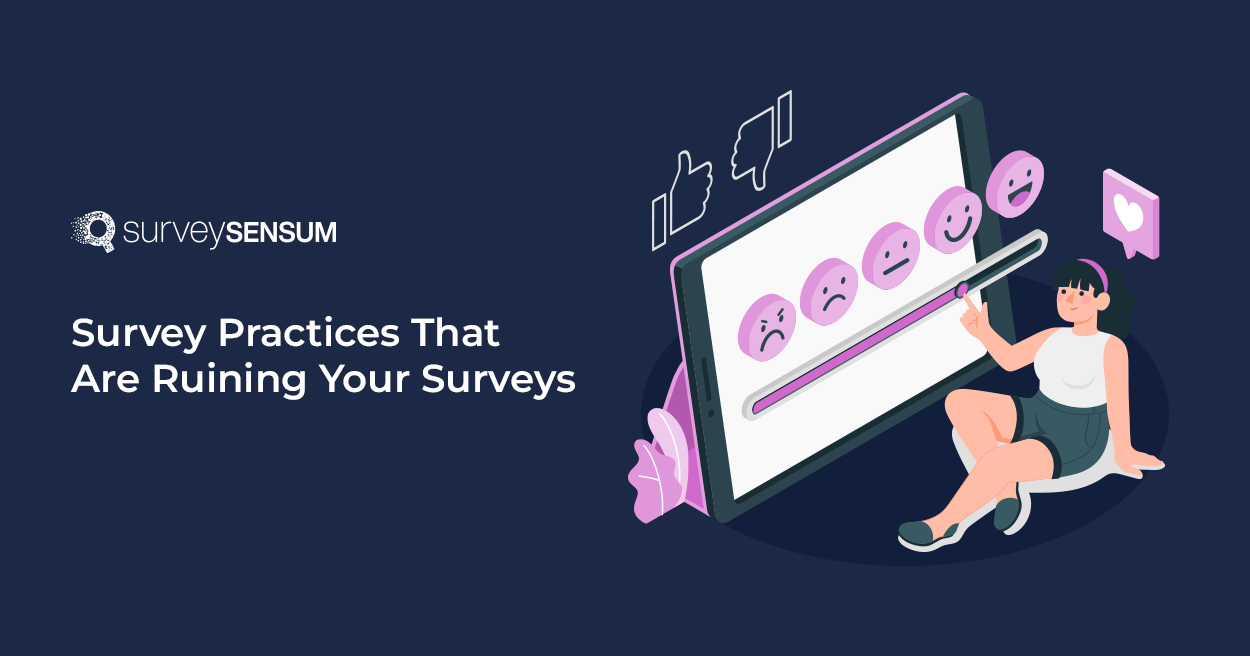
Filling out surveys is frustrating, right? Especially when those survey forms feel like exam question papers rather than quick feedback forms. I recently had an awful experience!
I recently bought a new smartphone and received a customer satisfaction survey. Being in the industry for the past 10+ years I understand the value of gathering customer feedback, so I clicked on “start survey” and set out to give my honest opinion.
But what ensued was a battle with my keyboard that I hadn’t signed up for. The survey’s language seemed to be curated by a team of over-caffeinated thesaurus enthusiasts, determined to turn a simple feedback process into a linguistic obstacle course.
“Kindly elucidate upon the facets that contributed to your satisfaction or dissatisfaction, expounding on the minutiae of your interaction with our esteemed product.”
Seriously? Are they gathering feedback or testing my vocabulary? They took a perfectly straightforward sentence, threw it into a blender, and served up a word salad with a side of frustration.
Now, this is just the tip of the iceberg. Surveys, if not designed properly by following survey best practices, will turn into a maze of nightmares for your business. I personally feel frustrated if I have to spend more time than required on filling out simple surveys, all because of poor execution, lack of communication, and language jargon.
There are many such survey practices that brands use and must avoid in order to create the perfect survey for their customers, with the help of a robust customer feedback tool. So, here’s a list of survey practices you need to avoid to customer survey madness and survey fatigue!
After working with different companies across industries – B2B, SaaS, Fintech, etc – here’s a curated list of some of the worst survey practice that brands keep following. These practices should be avoided and replaced with the best survey practices.

Ever filled out a survey that feels more like a test than a simple feedback form? It’s frustrating when you’re faced with a seemingly unending parade of questions, each demanding more time and attention. It’s as if the brand believes they’ve stumbled upon the hidden key to the universe in the 27th question!
The result? Your customers either abandon the survey midway or provide hasty, half-hearted feedback just to wrap it up.
Jeremy Watkin, director at Director of Custserv and NumberBarn: Whether you’re taking the survey or whether you’re on the other end of it, attending the survey, I think I have one practice – when I receive a survey from a company and they say it’s gonna be really quick but then when I start taking it and I get to the middle of it the little status bar that they show me moves ever so slowly and it just keeps dragging on and on and it probably has a lot of those matrix questions- I think that’s a great way to burn a bridge – you don’t set expectations upfront with customers – they’ll not want to take a survey with you again.
For instance,
→ How satisfied are you with your recent purchase on our platform?
Response options: Very Satisfied, Satisfied, Neutral, Dissatisfied, and Very Dissatisfied
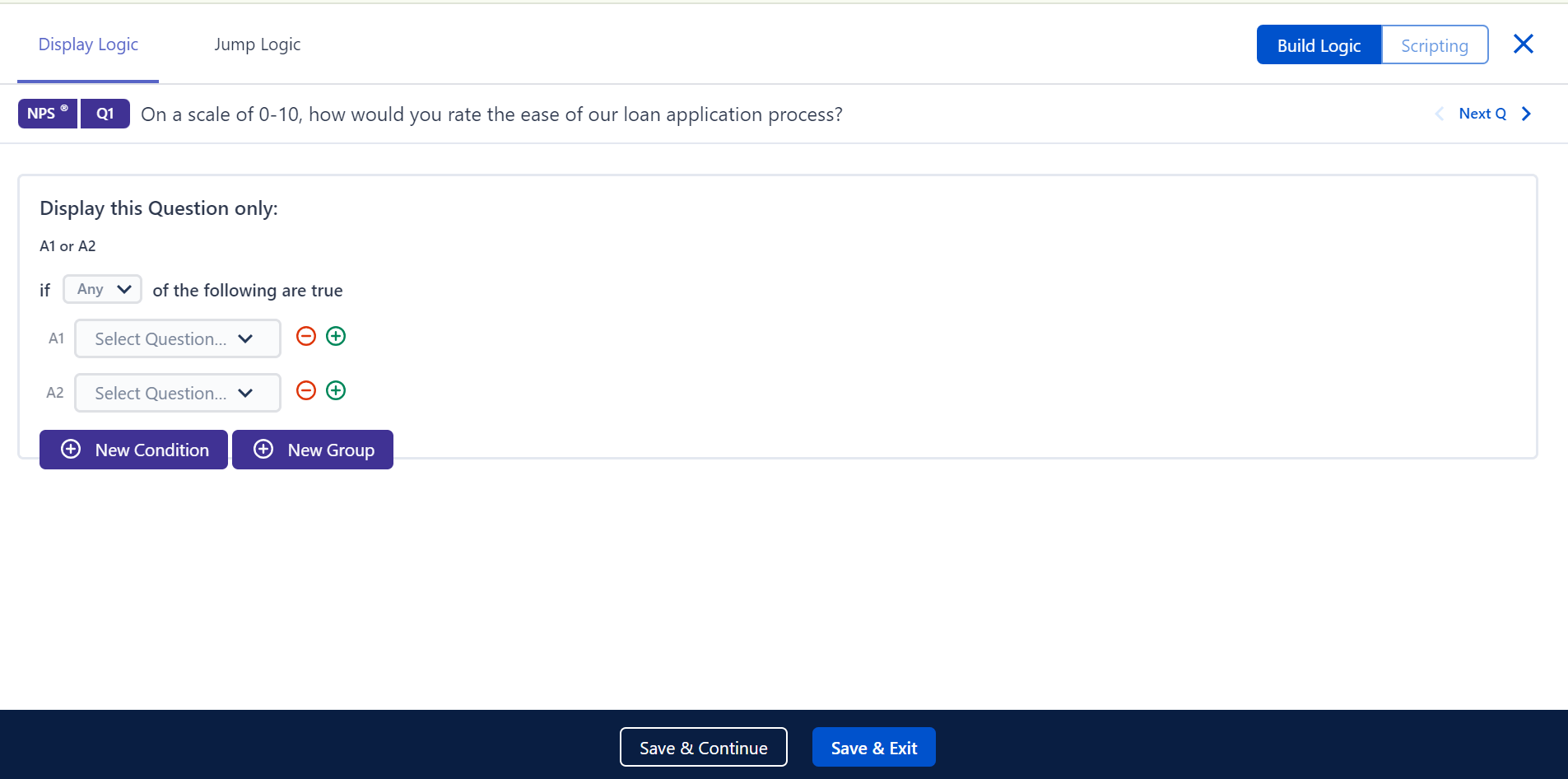
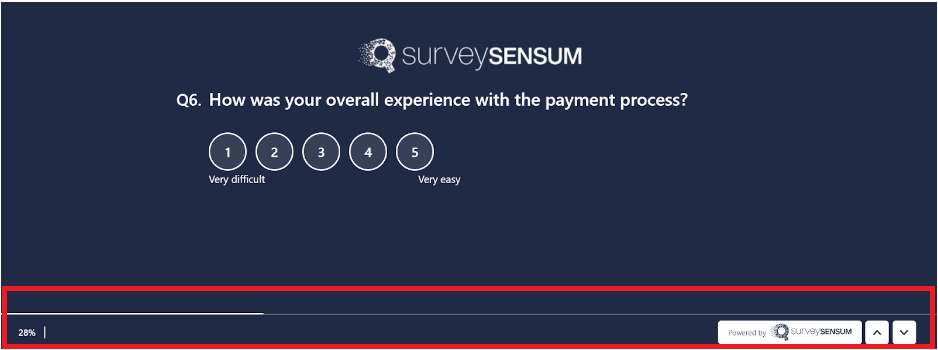
Sign Up & Launch Customer, Product, & Employee Experience Surveys With SurveySensum
How would you feel if every question you see in a survey sounded like something Shakespeare had written? You might need a dictionary to even understand the questions. Frustrating, right?
Using complicated language and words in your surveys will only lead to customer frustration and survey fatigue. Your customers will feel frustrated and might abandon the survey or provide half-hearted answers, compromising the authenticity of feedback.
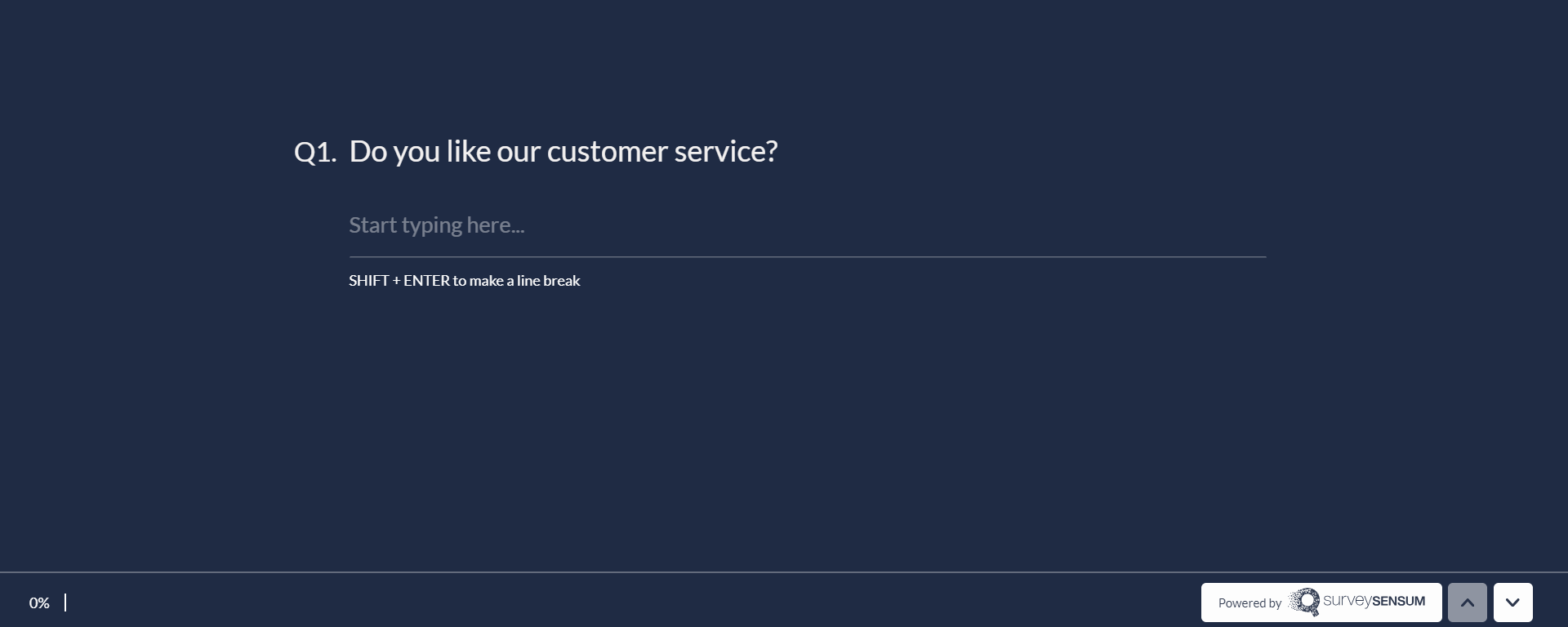
“Do you like our customer service?” – what is wrong with the question? The question doesn’t specify which aspect of customer service to evaluate, potentially resulting in generalized feedback that lacks depth.
So, avoid using vague scales that can lead to varied and imprecise data. Specific questions enable respondents to express their opinions accurately, providing valuable insights that can be easily analyzed and acted upon.
Then what would be the correct wordings for the above incorrect survey question?
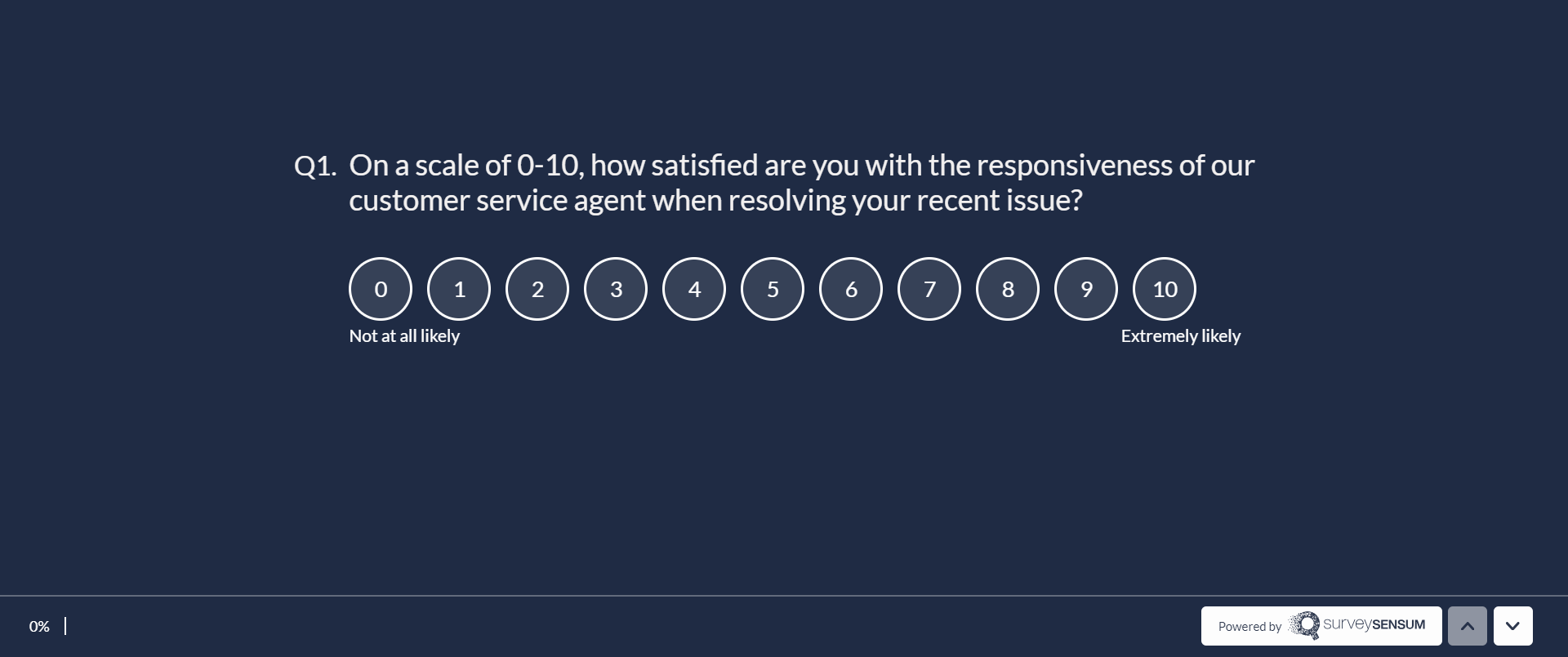
“On a scale of 0-10, how satisfied are you with the responsiveness of our customer service agent when resolving your recent issue?”
This revised question is more specific, addressing a particular aspect of customer service – the responsiveness of the agent. It also employs a satisfaction scale, allowing respondents to provide more nuanced and actionable feedback on the customer service experience.
So, start launching targeted surveys and gather customer feedback in real-time!
Have you ever received too many survey requests from the same company asking the same question repeatedly, forcing you to mark it as spam? I know I have. The survey frequency survey practice is something many businesses tend to forget, where the survey frequency and timing threaten to overwhelm and frustrate your customers.
So, how can you rectify this survey practice and ensure that their survey requests are welcomed rather than resented? Enter the solution: survey throttling.
With advanced customer experience management tools like SurveySensum, you can take advantage of the super feature survey throttling that will allow you to keep check of your survey frequency and not allow you to send the same survey to your customers again and again.
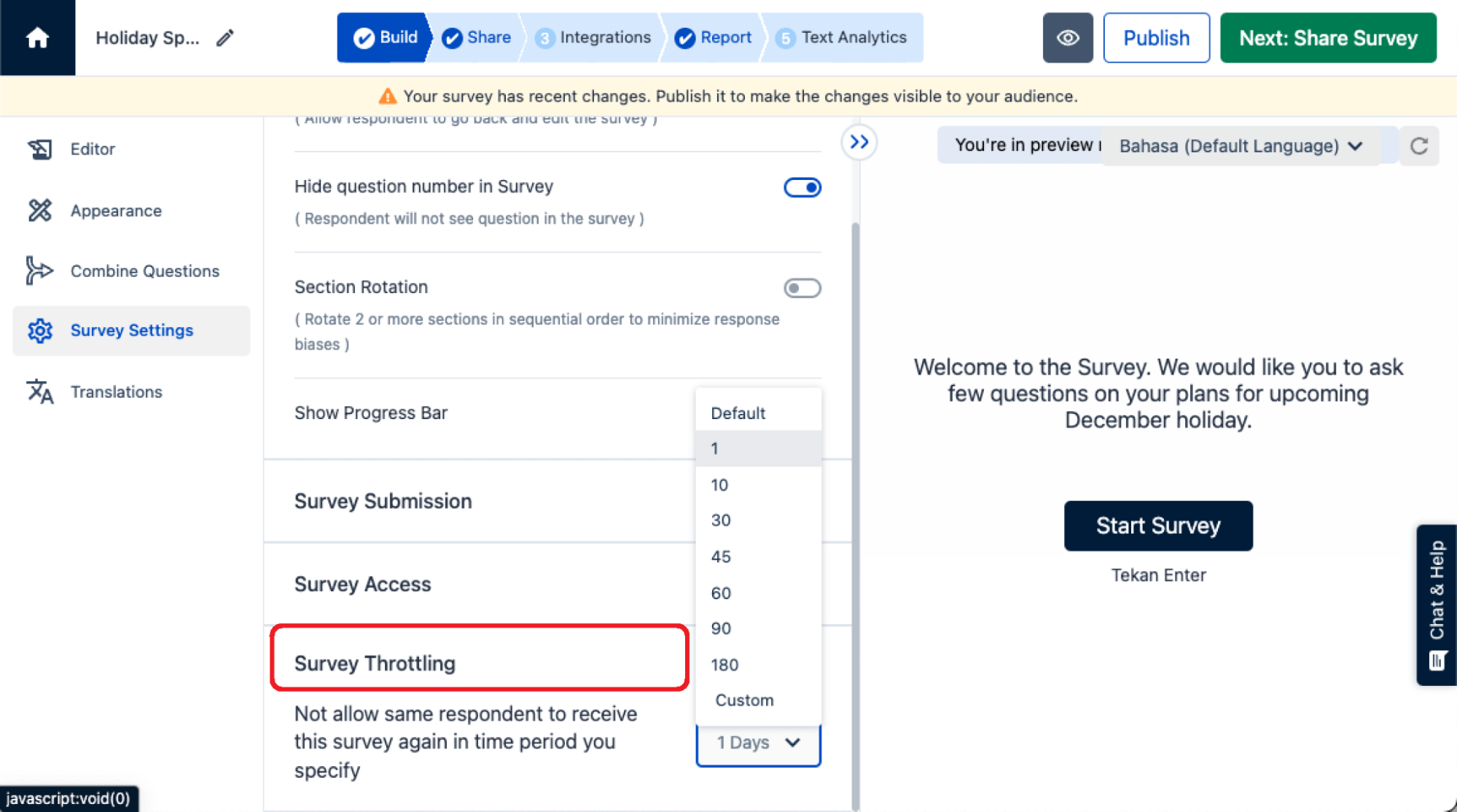
Here’s how I use this feature:
Another big survey practice that ruins your survey campaign is asking double-barrelled and biased questions.
“Don’t you agree that our new and innovative product is far superior to our outdated, less efficient competitor offerings?” – what do you think is wrong with this question? This question is biased because it contains persuasive language like “far superior,” and “outdated.
Respondents will feel compelled to agree, even if their true opinion is more nuanced or differs from the assumptions embedded in the question.
The result? A distorted representation of customer sentiment.
Tanuj Diwan, Co-Founder at SurveySensum: Survey after a transaction that has – 1. CSAT question 2. Open-end 3. NPS question 4. Open-end. It doesn’t make sense as both open ends have the same answers, I have seen responses where people mention you just asked the same question before.
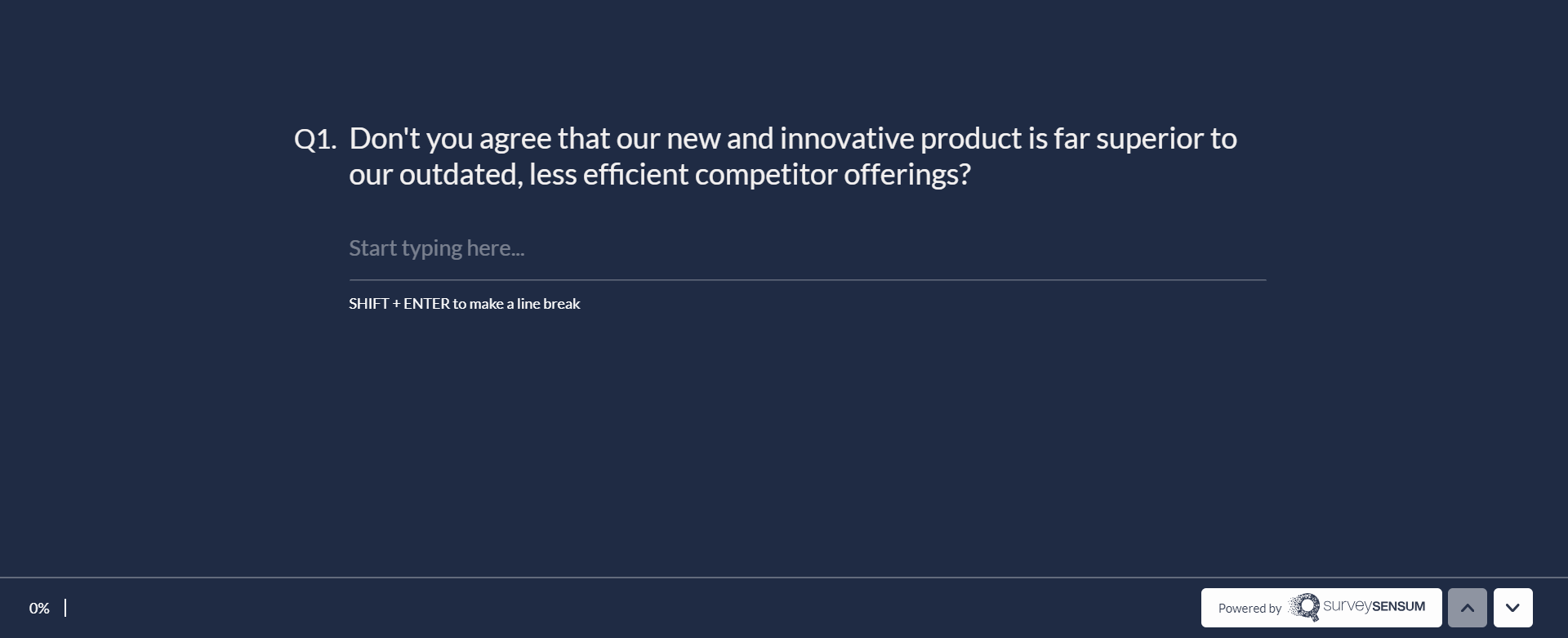
So,
Now, keeping the above solutions in mind, here is the correct phrasing of the above question – “How would you describe your experience with our product compared to other options available in the market?”
This question is unbiased as it avoids leading language and allows respondents to express their opinions freely.
Have you ever eagerly participated in a survey, enticed by the promise of exciting incentives, only to find yourself in a situation where those promised rewards are all false promises? Yeah, been there myself!
Surveys often offer enticing rewards to motivate participants to share their feedback. However, once the survey is completed, many businesses back out from offering the promised incentives – another big bad survey practice.
If you are offering survey incentives, then make sure you communicate the guidelines clearly from the beginning. If there are any rewards or incentives tied to survey participation, they should be explicitly stated in the survey introduction.
For example, if you are offering rewards to the first 50 participants, then make sure you are clearly communicating this condition to your customers.
Honest and transparent communication helps manage expectations, fostering trust between the company and the respondents.
The last important survey practice that might be ruining your survey campaigns is not communicating your survey goals and objectives to your customers before asking for their feedback.
This leaves your customers in the dark about the feedback process, which creates doubts in their minds about sharing information with you and might also discourage them from filling out the survey in the future.
Ben Motteram @CXpert: Not being told what was DONE with my #feedback. Closing the loop is the biggest gap in feedback practices today. I’ve just spent 15 minutes filling out your damn survey. The least you could do is tell me what changes you’ll be making as a result! #CXQOTD #ticksmeoff
You should explicitly communicate how the data collected through surveys will be used. Whether it’s for product improvements, service enhancements, or other strategic decisions, your customers deserve to know the purpose behind the surveys and how their input contributes to positive changes for your company.
By making these survey best practices a standard part of their survey strategy, companies can transform their survey campaign into a transparent and communicative process that will yield positive results.
From the never-ending questionnaires to the biased questions and unclear survey guidelines, the survey experience can become a frustrating experience for your customers which yields compromised survey data.
However, by acknowledging and addressing these common survey frustrations, and by using advanced feedback tools, like SurveySensum, companies can transform this process into a more positive, engaging, and mutually beneficial experience. Advanced features like skip logic, survey throttling, advanced integrations, text analytics, and customized dashboards will help streamline your feedback process and extract actionable insights from survey data.
